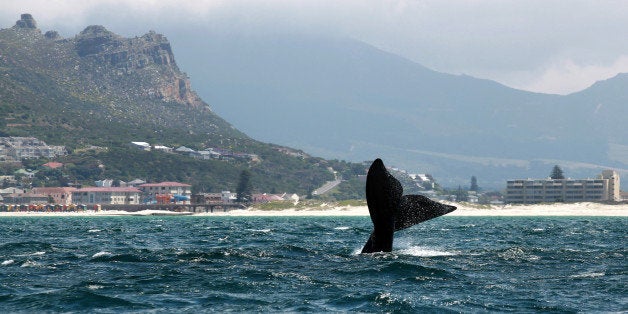
How did the right whale get its name? The answer is no laughing matter -- these whales were dubbed right whales because they were easy to hunt and float when dead, making them the "right" ones for whalers to target.
After centuries of whaling, the North Atlantic right whale is the rarest of all the large whales and one of the most endangered species in the United States. Approximately 500 North Atlantic right whales remain, and they are struggling to recover because they are especially vulnerable to being struck and killed by ships.
North Atlantic right whales migrate along the East Coast twice a year, spending the winter in the warm waters off of Georgia and northern Florida. In the spring, they migrate north to the cooler waters between New York and Nova Scotia to feed on plankton. Unfortunately, this annual migration route puts right whales directly in the path of heavy shipping traffic.
Right whales could soon face another threat -- oil and gas exploration along most of their migration route. The government has proposed protection plans to try and mitigate the harm, but now new Oceana-funded research reveals that these measures won't adequately protect these critically endangered whales.
The Bureau of Ocean Energy Management (BOEM) is planning to allow the oil and gas industry to use seismic airguns to search for offshore deposits. These devices map the seafloor by shooting pulses of compressed air through the water every 10 seconds. The blasts, 100,000 times louder than standing near a jet engine, are extremely harmful to marine mammals like the right whale. The government estimates that at least 138,500 dolphins and whales will be injured, or possibly killed, by seismic airguns if they are allowed in the Atlantic.
As part of the decision process, BOEM is required to assess the effects airguns will have on the environment and propose protections for endangered species like right whales. They are currently proposing closing certain areas up to 23 miles off shore to airgun use during whale migration season. But we now know BOEM is using incomplete data to determine where and when right whales need protection.
New research, funded by Oceana and the International Fund for Animal Welfare, reveals that right whales are present throughout the year off the Virginia coast and are found farther offshore than previously expected. Researchers from Cornell University's Bioacoustics Research Program used five acoustic monitors to record right whale calls offshore. BOEM's proposed plan only protects whales up to 23 miles off shore during a few months of the year, but the acoustic monitors detected right whales year-round between 16 and 63 miles from the coast. The majority of right whale activity in the study was outside of BOEM's proposed protection areas.
These new data have serious implications for the environmental review process for seismic airgun surveys. BOEM's time-area closures are not enough to protect right whales from the effects of seismic airguns or fatal ship strikes. BOEM must incorporate the latest research into their protective measures before continuing with their analysis and decision on seismic airguns.